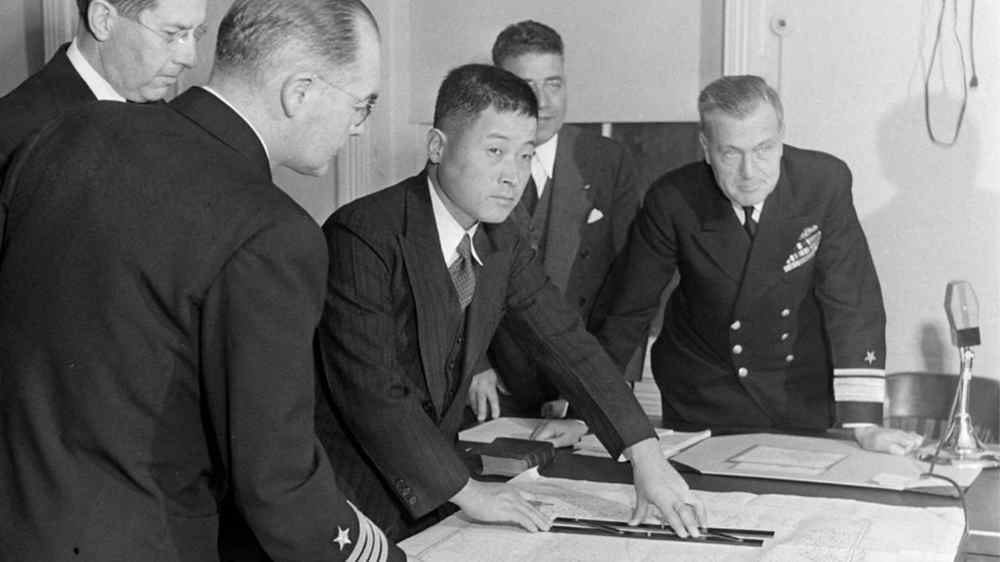History Stuff
The Deadliest Shark Attack Ever

Sharks are scary enough when you're wading in knee deep water and a piece of seaweed brushes your leg. Now imagine you're stranded in the middle of the Pacific, floating in the open ocean, and the most terrifying sea creatures on Earth are circling you in the hundreds. That's what happened to the survivors of the USS Indianapolis in what became the worst shark attack in recorded history.
A Top Secret Mission
The USS Indianapolis wasn't just any warship. Commissioned in 1932, this Portland class heavy cruiser had already lived several lives before her final, fateful mission. She served as President Roosevelt's ship of state in the prewar years and even survived the attack on Pearl Harbor because she was out on training exercises. The Indianapolis earned 10 battle stars through her World War II service before being selected for perhaps the most momentous secret mission of the war.
In July 1945, the Indianapolis was tasked with a critical mission: deliver parts of "Little Boy" the atomic bomb that would later be dropped on Hiroshima. The mission was so classified that even most of the crew didn't know what they were carrying. Captain Charles McVay III himself only knew they were transporting "the most important cargo ever carried by a U.S. ship."
After successfully delivering their cargo to Tinian Island on July 26, 1945, the ship was ordered to sail to Leyte Gulf in the Philippines to prepare for the invasion of Japan. The Indianapolis set out unescorted, following standard Navy protocols of the time for single ship movements.

The “Little Boy”
When History Changed Course
On July 30, 1945, just past midnight, disaster struck. A Japanese submarine, I-58, commanded by Mochitsura Hashimoto, spotted the Indianapolis and fired two torpedoes. Both hit the ship square in the side. One struck near the bow, the other amidships (In the middle of the ship).
Within 12 minutes, the mighty warship plunged into the Philippine Sea. Of the 1,195 men onboard, approximately 900 made it into the water alive. But their nightmare was just beginning.

Japanese Commander Mochitsura Hashimoto testifying at the McVay trial in 1945
The Attack
For four days, the survivors drifted in the open ocean with no lifeboats, minimal life jackets, no food, and barely any fresh water. But the real horror? The oceanic whitetip sharks that started showing up, drawn by the blood and desperate movements in the water.
At first, the sharks went for the dead. But as the hours turned to days and exhaustion set in, the sharks started attacking the living. Survivors reported watching shipmates get dragged underwater, their screams muffled by the waves before disappearing forever.
"The sharks were around us all the time," recalled survivor Edgar Harrell. "They'd come up and bump you. We had to stay together in groups. That was the only defense we had against them."
No one knows exactly how many men were eaten, but estimates suggest hundreds were taken by sharks before rescue arrived. The oceanic whitetip, once described by Jacques Cousteau as "the most dangerous of all sharks," found in the Indianapolis survivors an unprecedented feeding opportunity (Fun fact for you: Jacques Cousteau invented the tech behind SCUBA diving).

The Rescue
Because the ship sank so fast and their mission was top secret, no one knew the Indianapolis was even missing. In one of the most tragic bureaucratic blunders in military history, the ship was never reported overdue when it failed to arrive at Leyte Gulf.
It wasn't until a routine patrol plane accidentally spotted survivors in the water that the Navy realized something had gone horribly wrong. Lieutenant Wilbur Gwinn was flying his PV-1 Ventura bomber on a routine antisubmarine patrol when he happened to notice oil slicks and heads bobbing in the water below.
By the time help arrived, only 316 men were still alive. That means nearly 600 men died from dehydration, exposure, drowning and yes shark attacks.

A PV-1 Ventura
The Aftermath
For decades, the USS Indianapolis disaster remained one of the worst kept secrets of World War II. In a controversial move, Captain Charles McVay III was court martialed for failing to zigzag the ship to avoid torpedoes (even though no one could prove it would have helped).
What makes this particularly outrageous? The Navy brought in Commander Mochitsura Hashimoto, the Japanese submarine captain who sank the Indianapolis, to testify against McVay. Hashimoto, to his credit, testified that zigzagging would not have made any difference.
Despite this, McVay was found guilty. He continued to serve in the Navy until 1949, but the weight of the disaster and the blame placed upon him proved too much. In 1968, using his Navy issued service revolver, McVay took his own life.
It wasn't until 2000, thanks in part to the efforts of survivor Paul Murphy and a 12 year old student named Hunter Scott (who became interested in the case after watching "Jaws"), that the U.S. Congress passed a resolution exonerating McVay. President Clinton signed the measure, officially clearing the captain's name, though far too late for McVay himself.
As for the sharks? The oceanic whitetip populations have plummeted since World War II, with some estimates suggesting their numbers are down by over 90%. The predators that once terrorized those sailors are now themselves facing extinction.
The USS Indianapolis stands as one of the most harrowing chapters of naval history, a testament to both the horrors of war and the incredible endurance of those who survive it. For the city that shares its name, it remains an important legacy and a powerful reminder of sacrifice that continues to be honored in stone, memory, and museum exhibits throughout Indianapolis today.

Pick a Response Below
Quint’s monologue in Jaws that brought widespread attention to the tragedy 👇
|
|
|
Thanks for reading. |
Check out some of our other articles


